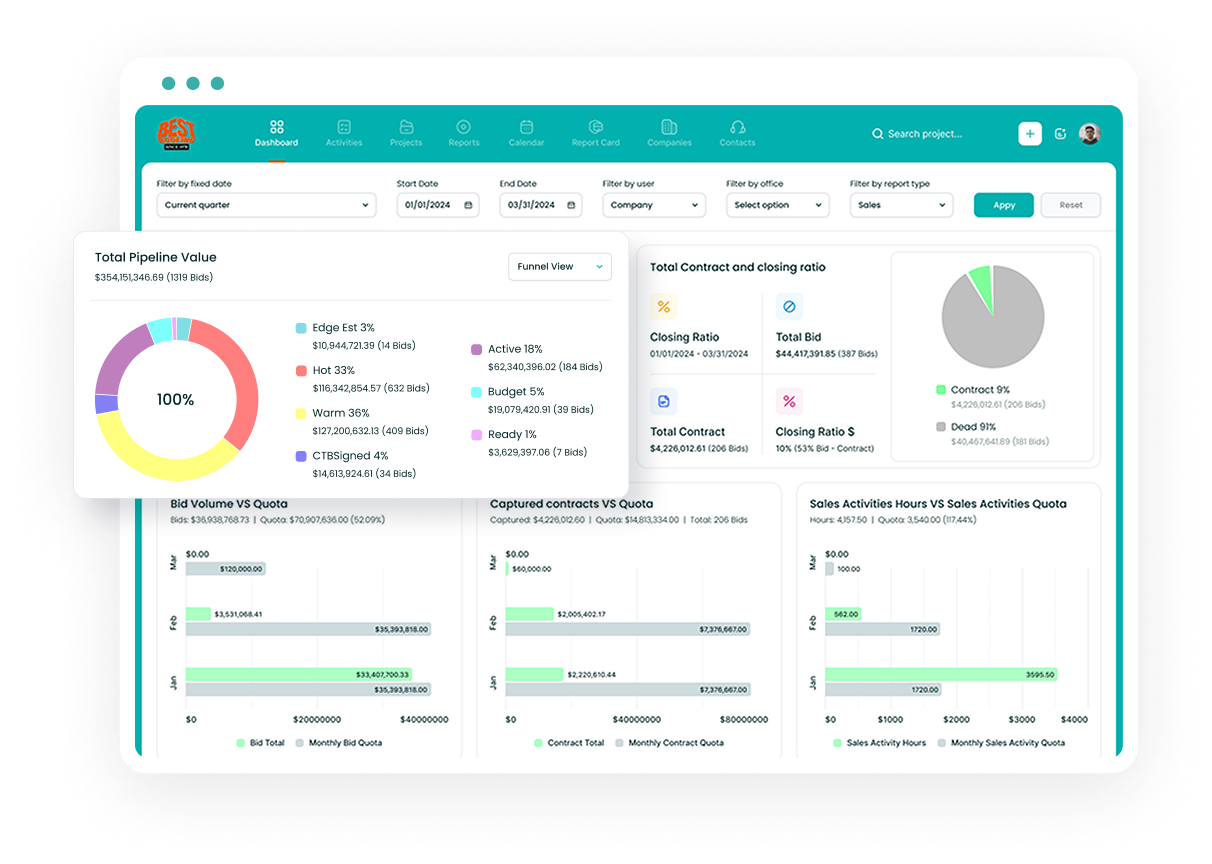Setting the foundation for a data management strategy
So you signed up for a customer relationship management service, like Followup CRM, and you've created a strategy for managing customer data. You're on your way! You’re paving the path toward company growth. Setting up ins and outs of entering data related to your clients is an important step before you're able to focus on data management as a whole.
Having a CRM is the first step for reducing data entry and eliminating double entries in different programs or record-keeping methods. But the big changes happen when you take the time to refine what data you enter and how. Don't let your CRM become a large, overstuffed garage you never want to go into because it's chaos. Watch a free video demo on Followup CRM's simple interface, perfect contractors' data collection needs.
Types of data you should be entering into your contracting CRM
Now come the details. Do you know what kind of data you should be entering into your CRM? No one can tell you what’s the right or wrong kind of data to store, but there is such a thing as storing too much data. Not only will defining what the most important data metrics are for your business help streamline processes and grow your customer base, it will cut down on needless data entry.
Some data elements you might want to ensure you're taking down are basic contact information, frequency of communication, and conversion rates from leads to customers.
Setting rules for data collection on construction clients and projects
After you decide what data elements are most important now you can set rules for how you want future data entered on digital client and project files. Why is this necessary? Setting a system for how to continue collecting data, like client notes and feedback, is cost-effective. You can make sure you and your team aren't wasting time on unnecessary conversations, details or data that isn't relevant to your marketing strategies and your bottom line.
Understand the data lifecycle for your contracting CRM
Making data collection rules also allows room for the data lifecycle. All data has a lifecycle it runs through to keep it relevant, accurate, and useable for your business needs. The data lifecycle varies but it typically includes these phases:
- Data capture—The first step in the data life cycle is the collection and entry of all your data.
- Storing and managing data—Managing updates and storing your data is the next phase.
- Analyzing data—Once you have entered and updated your data, reviewing with dashboards and reporting is the next phase of the data life cycle.
- Preserve—Ensuring you have backups and have encrypted your data follows analysis and preserving data is a feature Followup CRM offers.
- Share—If you choose to share your project management data with clients or subcontractors, this is a part of the data lifecycle.
- Reuse—Revisiting client and job information throughout the length of the project involves reusing or reviewing data originally collected and managed.
- Destroy—Some data, when it has lost value for your business, is no longer relevant, or is in violation of data privacy laws, should be destroyed.
Data collection and management is not always a linear process. Sometimes you will move between analyzing and managing data, or you may share some data immediately after capturing it. This is why you need data rules: to help organize the back and forth that can happen between a lead, conversion, proposal, accepted bid, estimates, and updates to customer contact information. Usually once a year, CRM users will go through their software to update data that has fallen victim to data decay.
Ensuring high quality client interactions in the construction industry
Once you know the data you're collecting, and after ensuring that it’s relevant to your goals, now you can make decisions on how your team is continuing communications with clients. Setting processes and expectations about how frequently and in what ways your staff is interacting with clients can help you:
- Avoid overcommunicating or communicating too infrequently with your clients
- Decide how the communication method, whether phone, email, or face-to-face best suits your client demographic
- Ensure that the style of communication, friendly, credible and everything in between, is a reflection of your brand
It’s easy for customers to associate a handful of good experiences with a good, trusted brand. Setting communication rules for further data collection cements your excellent customer care and credibility with branding that makes thousands of customers each feel like your highest-priority client.

